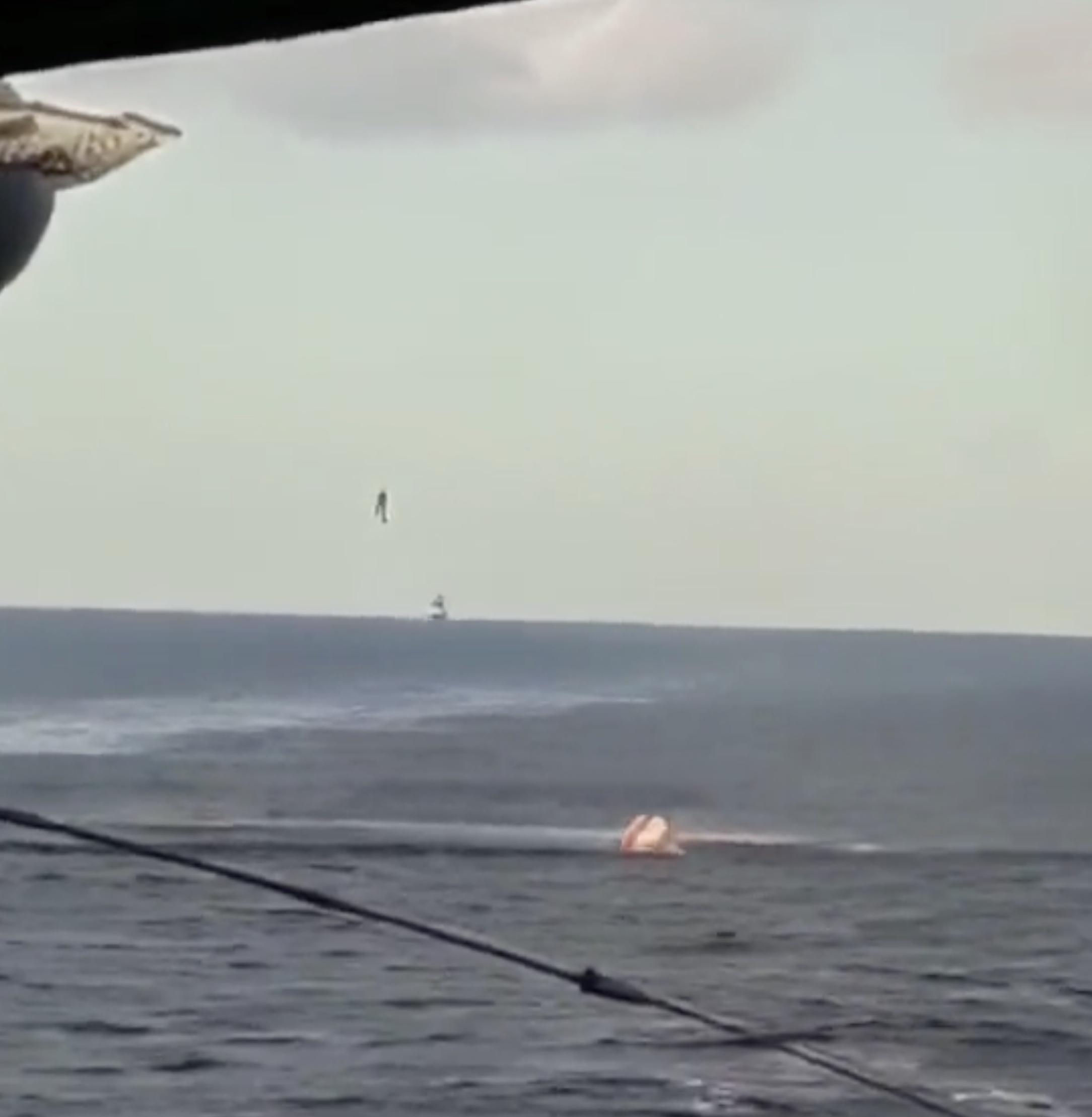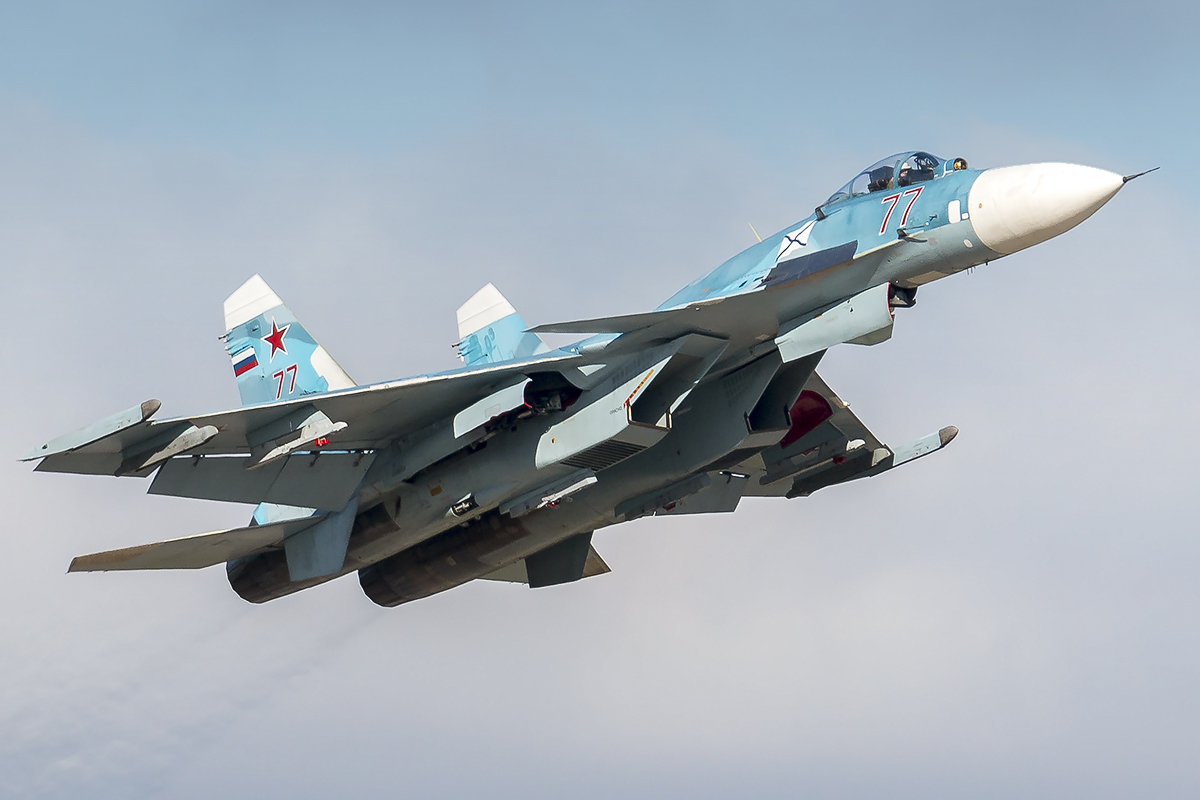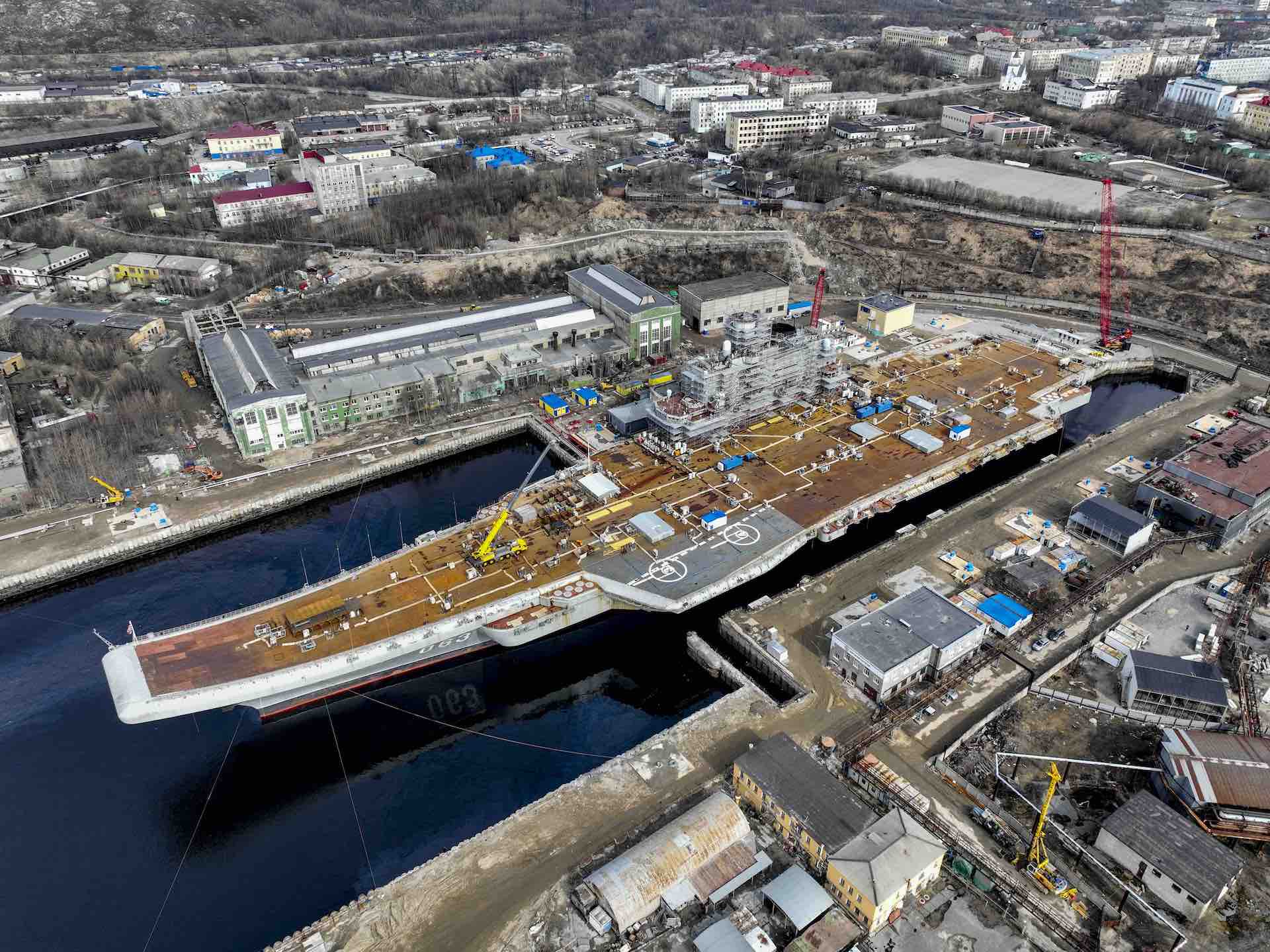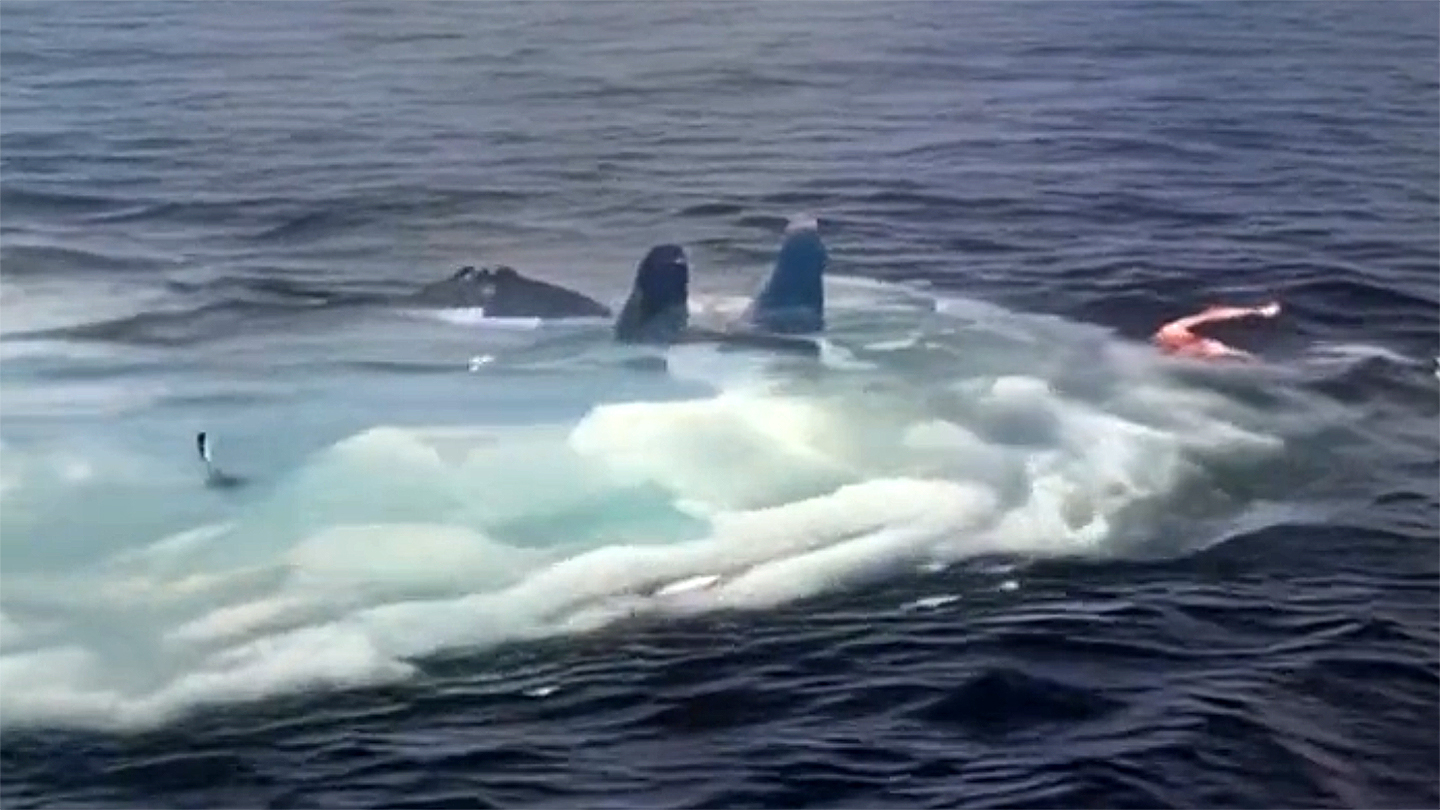Recent video footage provides a dramatic new perspective on a crash involving a Russian Sukhoi Su-33 as the fighter attempted to land on the Russian aircraft carrier Admiral Kuznetsov back in 2016. The incident came as the vessel was sailing off the coast of Syria, as part of Russia’s operation in support of the Assad regime. The pilot was able to safely eject before the aircraft plunged into the sea, and was subsequently rescued.
The leaked video footage, taken from a hand-held device aboard Kuznetsov, shows the Su-33 still floating in the Eastern Mediterranean Sea in the aftermath of the crash. In the video, we see the big fighter’s twin vertical tail fins protruding from the water as the ship passes by. Overhead, a rescue helicopter moves to pluck the pilot out of the water.
Towards the end of the clip, as the vessel moves away and begins to turn, the pilot can be seen being winched into the air by the helicopter. The footage also seems to suggest he may have been tangled in the cords of the parachute as he was lifted.
The video filmed from Kuznetsov, if not taken in an official capacity, underscores the significant security issues surrounding hand-held electronic devices owned by the thousands of people on board naval vessels, chiefly smartphones. Instances where crash footage involving aircraft operating from U.S. Navy and Royal Navy carriers has leaked online similarly highlight the challenges of keeping potentially confidential information secret.

As we reported at the time, the ship’s arresting gear was at the center of why the Su-33 crash occurred:
“[the crash] was the result of one of the carrier’s cross-deck pendants — also known as a wire — snapping right after a Su-33’s tailhook caught it upon touchdown. With the wire partially slowing the aircraft before snapping, the Su-33 did not have enough energy to bolter, and return to the air. Deprived of airspeed, the jet plummeted into the sea. Thankfully the pilot was able to eject and was subsequently picked up alive by one of the ship’s helicopters.”
The aircraft was one of a small number of the ship’s Su-33s to have received slight upgrades, including some modernized avionics, prior to the crash. At that time, as we noted, Kuznetsov’s air wing consisted of 10 Su-33s, eight of which featured said modifications, as well as four to five newer MiG-29KR naval strike fighters.


Kuznetsov’s time supporting operations off Syria in 2016 was ultimately short-lived. The warship made its way from the Barents Sea in mid October 2016 through the English Channel and into the Mediterranean. One of the carrier’s MiG-29KRs crashed once the vessel was on station in November. This was similarly caused by problems with the ship’s cross-deck arresting cables, which you can read more about here. Kuznetsov was ordered back to its home port of Severomorsk in early January 2017.
It should be noted that the wrecks of the Su-33 and MiG-29KR lost in late 2016 were subsequently located by Russia’s espionage and ‘research’ ship Yantar, and any sensitive systems remaining on them were likely either removed or destroyed.
Since 2017, Kuznetsov has been undergoing a labored overhaul effort, designed to keep the carrier operational for years to come. The vessel has had its fair share of dramatic incidents since that time, suffering multiple fires and a drydock sinking. At present, plans for Kuznetsov’s return to Russia’s combat fleet are set for 2024, although issues with crew recruitment — amplified by strained resources as a result of the war in Ukraine — make this seem like an optimistic goal.

As we’ve highlighted beforehand, Su-33 and MiG-29KR aircrews previously attached to Kuznetsov will need to re-qualify for carrier operations aboard the ship, too. Those pilots will not have operated from the carrier for seven years by the time it’s operational, should the anticipated timeline unfold as expected.
Contact the author: oliver@thewarzone.com
